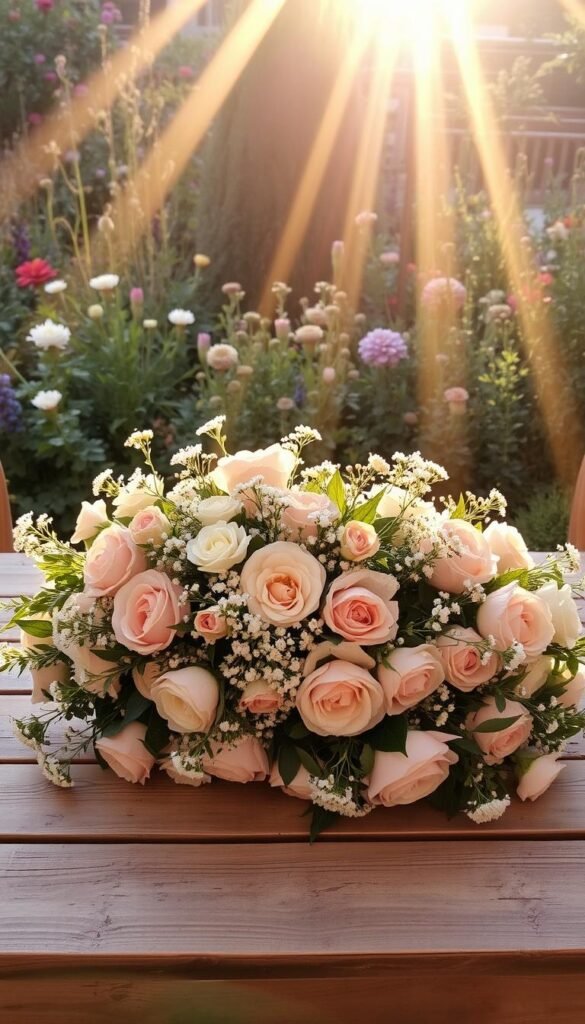Imagine walking down the aisle surrounded by blossoms you designed—arrangements that capture your personality while keeping costs manageable. Crafting your own floral elements lets you infuse every petal with meaning, but it requires smart preparation and realistic expectations.
Social media inspires grand ideas, but those picture-perfect bouquets often use fragile, out-of-season varieties. We’ll show you how to adapt trending styles using budget-friendly blooms that thrive during your event month. Discover which flowers offer durability for centerpieces and which work best for arches or aisle markers.
This resource simplifies the process of sourcing, designing, and organizing your botanical details. You’ll learn to create detailed checklists, prioritize key arrangements, and build a flexible timeline. We’ll even share clever tricks to reuse ceremony flowers at the reception—maximizing impact without doubling expenses.
By focusing on seasonal availability and practical design choices, you’ll avoid last-minute scrambles. Let’s transform your vision into reality with solutions that balance beauty, workload, and budget.
Understanding the DIY Wedding Flower Trend
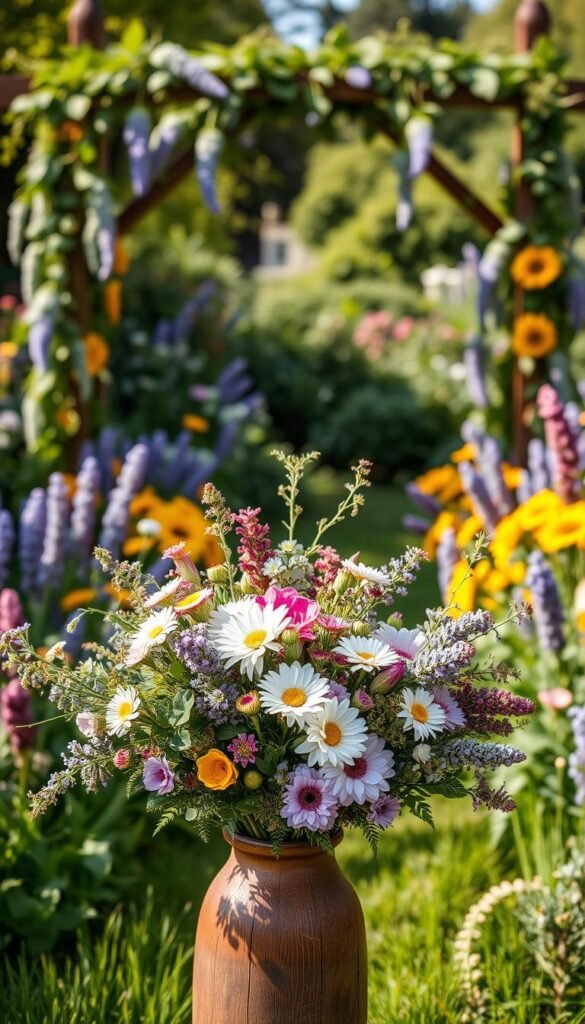
More couples are reimagining their celebrations by embracing hands-on floral designs that reflect both style and values. This movement combines creativity with conscious choices, letting you craft arrangements that feel uniquely yours while respecting the planet.
Sustainability and Eco-Friendly Options
Choosing to source blooms directly from local growers cuts transportation emissions and supports community agriculture. A recent study found that bulk flower purchases reduce packaging waste by up to 60% compared to traditional florist orders. Seasonal varieties like dahlias or sunflowers not only thrive in their natural growing period but also require fewer preservatives.
“Our centerpieces felt meaningful because we knew exactly where each stem came from – it connected our day to the local ecosystem.”
Budget-Friendly DIY Approaches
Designing your own arrangements lets you allocate funds strategically. For example, repurposing ceremony aisle markers as reception table decor can trim costs by 30-40%. Many couples use budget-friendly blooms like carnations or chrysanthemums – which cost half the price of peonies but last twice as long.
| Factor | Traditional Florist | DIY Approach |
|---|---|---|
| Average Cost per Centerpiece | $120-$200 | $40-$75 |
| Lead Time Required | 4-6 months | 2-3 weeks |
| Customization Options | Limited | Full creative control |
Flexibility shines through in unexpected ways. One bride mixed grocery-store eucalyptus with farmer’s market zinnias, creating textured bouquets that stayed under $15 each. The key? Prioritizing durable flowers that maintain freshness from first look to final dance.
Planning a Flower Garden Wedding: Tips for DIY Floral Decorations
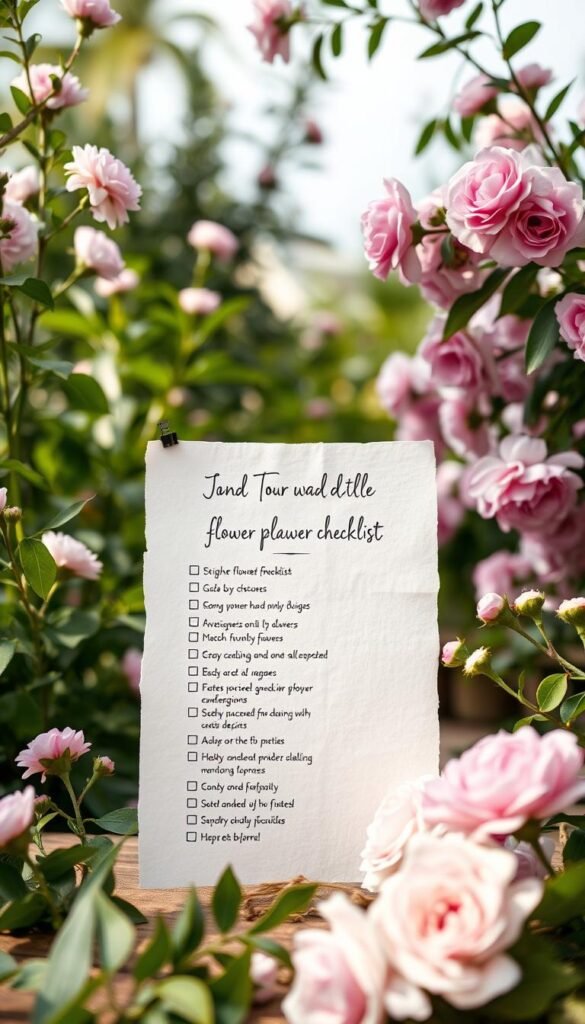
Your bouquet shouldn’t be the only showstopper—every corner of your venue deserves botanical charm. Start by mapping every spot needing greenery or blooms: boutonnieres, altar accents, cake table garnishes. Pro tip: Walk through your venue photos and circle areas where florals could enhance the atmosphere.
Numbers matter more than Pinterest boards. A recent survey found couples underestimate floral costs by 45% when relying on social media inspiration. Build a realistic budget using current wholesale prices—roses cost $1.50-$3/stem during peak season, while gardenias run $4-$6. Always order 20% extra for design adjustments.
“We moved ceremony arrangements to the dessert table during dinner—guests thought we’d doubled our flower budget!”
Smart sourcing makes all the difference. Consider these options:
| Source | Cost Range | Lead Time |
|---|---|---|
| Local Flower Farms | $0.75-$2/stem | 3-6 months |
| Wholesale Clubs | $1-$4/bunch | 2 weeks |
| Grocery Stores | $8-$15/pre-made | 3 days |
Hardy blooms like alstroemeria and solidago withstand summer heat, while anemones thrive in cooler months. Design work peaks 2 days before your event—recruit 3-4 helpers for conditioning stems and building centerpieces. Remember: repurposed arrangements aren’t just thrifty—they create visual continuity from vows to last dance.
Defining Your Wedding Vision and Color Palette
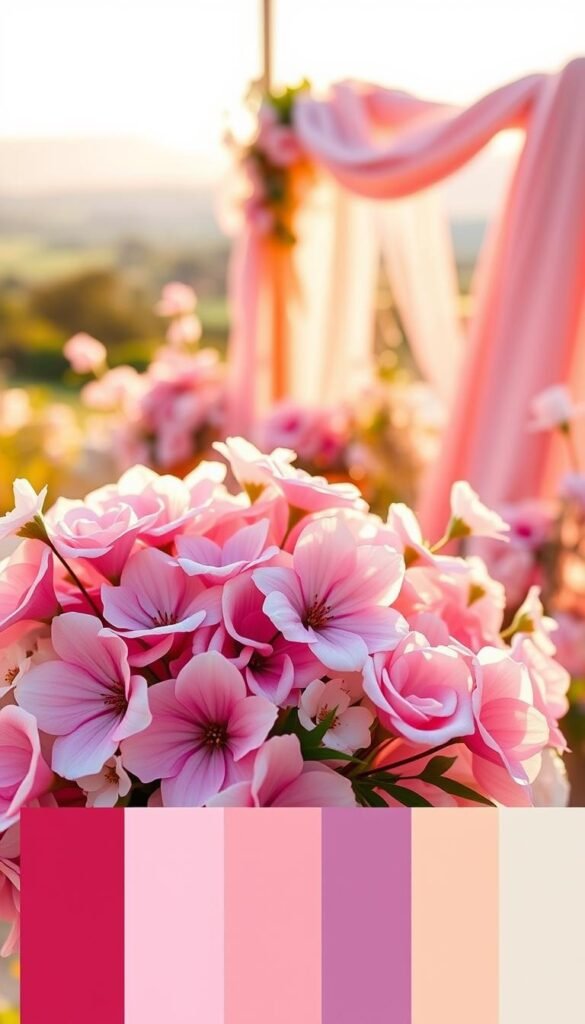
Your wedding florals tell a story—one that begins with colors and textures harmonizing with your venue’s atmosphere. Start by curating a digital inspiration board using Pinterest or Canva. Group ideas into categories like bouquets, aisle decor, and table settings. This visual roadmap helps communicate your style while leaving room for seasonal adjustments.
Choosing Seasonal Blooms
Nature’s calendar shapes your options. Spring weddings shine with ranunculus and peonies, while autumn celebrations glow with chrysanthemums and dahlias. Check local growers’ availability charts—their expertise ensures you get the freshest blooms at peak quality. Here’s a quick seasonal guide:
| Season | Top Flowers | Average Cost/Stem |
|---|---|---|
| Spring | Peonies, Tulips | $2.50-$4 |
| Summer | Sunflowers, Zinnias | $1-$3 |
| Fall | Dahlias, Celosia | $2-$3.50 |
Mixing Color and Texture
Modern palettes balance bold statements with subtle accents. Try pairing terracotta roses with olive-green eucalyptus for earthy warmth. For contemporary flair, layer white anemones with neon-hued orchids. One bride shared:
“We blended blush garden roses with bronze ferns—guents said our centerpieces looked like sunset captured in vases!”
Remember: your color palette should feel authentic, not forced. If coral isn’t your vibe but fits the season, tweak saturation levels or add contrasting textures. Velvety petals alongside spiky thistles create visual interest without clashing hues.
Creating a Comprehensive Floral List
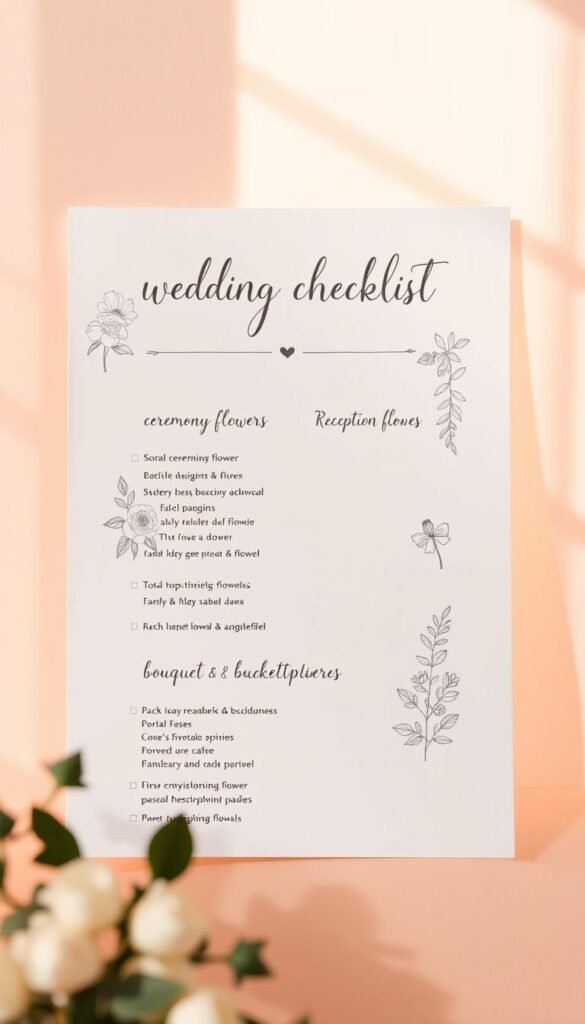
Your detailed floral inventory acts as both blueprint and budget calculator. Start by listing every stem needed across your event spaces. This master document helps prevent overlooked details while aligning your vision with practical limits.
Personal Flowers and Special Touches
Bridal bouquets anchor your look, but don’t forget supporting players. Calculate needs using this formula:
| Role | Floral Element | Quantity |
|---|---|---|
| Bride | Main bouquet | 1 |
| Bridesmaids | Smaller bouquets | 4 |
| Groomsmen | Boutonnieres | 6 |
| Mothers | Corsages | 3 |
Add whimsy with floral halos for flower girls. One couple saved $120 by repurposing ceremony aisle petals into reception confetti.
Ceremony and Reception Arrangements
Map your venue like a florist. For 100 guests, ten aisle jars create rhythm without overcrowding. Statement pieces at the altar draw eyes during vows.
Reception math matters most. Ten tables need centerpieces, but consider doubling duty: ceremony pedestals can become cake table accents. As one planner notes:
“Moving the bridesmaids’ bouquets to dessert displays gave us free vase arrangements.”
Don’t overlook functional spaces. A single arrangement elevates the bar area, while cocktail tables benefit from petite bud vases. Your list becomes the ultimate cheat sheet for stress-free execution.
Navigating Flower Availability and Substitutions
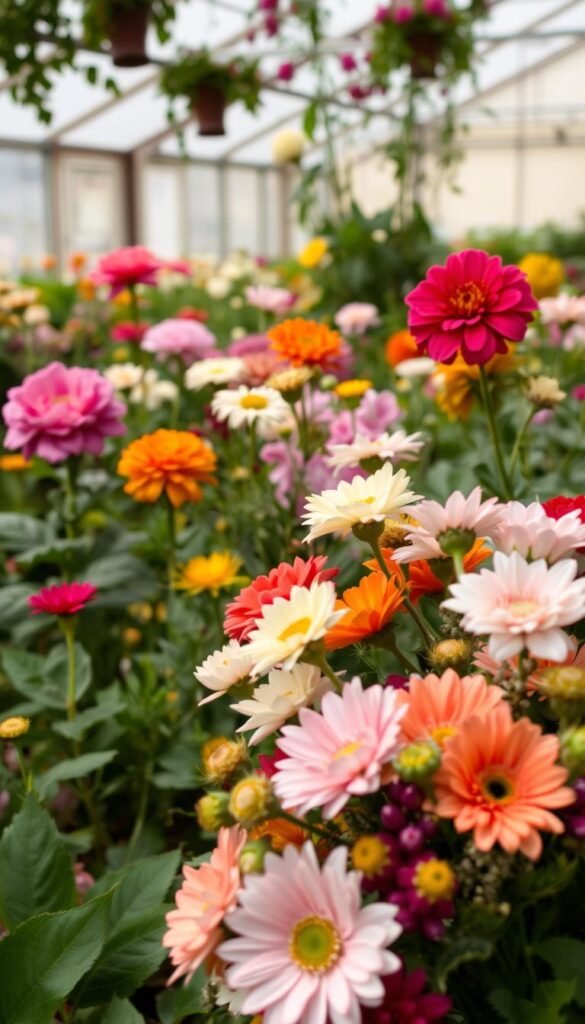
Today’s floral market moves faster than ever—what’s abundant today might vanish tomorrow. Supply chain hiccups and climate shifts mean your dream blooms might need backup plans. Stay ahead by building adaptable designs that embrace nature’s unpredictability.
Understanding Seasonal Challenges
Global events reshaped how flowers reach your hands. Labor shortages delay harvests, while fuel costs spike transportation fees. A 2023 survey revealed 72% of growers faced seed shortages, pushing couples toward hardy varieties like lisianthus or snapdragons.
| Season | Preferred Blooms | Reliable Alternatives | Availability Window |
|---|---|---|---|
| Spring | Peonies | Double Tulips | April-June |
| Summer | Garden Roses | Spray Carnations | June-August |
| Fall | Dahlias | Chrysanthemums | September-November |
Flexible Design Strategies
Think in color stories rather than specific stems. Tell suppliers: “We want moody burgundies, not just ranunculus.” This approach lets florists swap unavailable options while keeping your vision intact.
“Our florist replaced half our requested blooms, but the final arrangements looked better than our Pinterest board!”
Build a substitution hierarchy for each arrangement. Prioritize must-have hues first, then textures, then exact varieties. Pair this with a 15% surplus budget for last-minute floral adjustments—your sanity will thank you later.
DIY Strategies for Budget-Friendly Wedding Flowers
Your floral choices shape both aesthetics and ethics. While big-box retailers dominate the market, creative sourcing lets you balance quality with conscience. Let’s explore how to blend local charm with wholesale practicality.
Local Growers vs. Wholesale Sources
Local flower farms offer hyper-seasonal varieties that reflect your region’s character. Their blooms often last longer since they’re cut hours before sale. Many provide expert advice on what’s thriving during your event month.
But local growers face challenges. Most can’t stock popular imports like roses year-round. If your vision requires specific hybrids, wholesale clubs fill gaps. Their bulk pricing on carnations or alstroemeria helps stretch budgets.
One couple mixed farmer’s market dahlias with Costco eucalyptus, saving $300 on centerpieces. “The combo felt intentional—rustic meets refined,” they shared. Always request availability lists 4 months ahead to compare options.
Need classic roses? Grocery chains provide consistent access, though stems may lack uniqueness. For a personal touch, ask your florist to enhance store-bought bouquets with foraged greenery. This hybrid approach delivers variety without breaking the bank.

